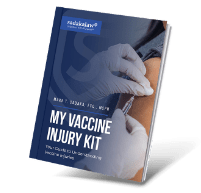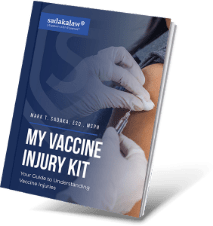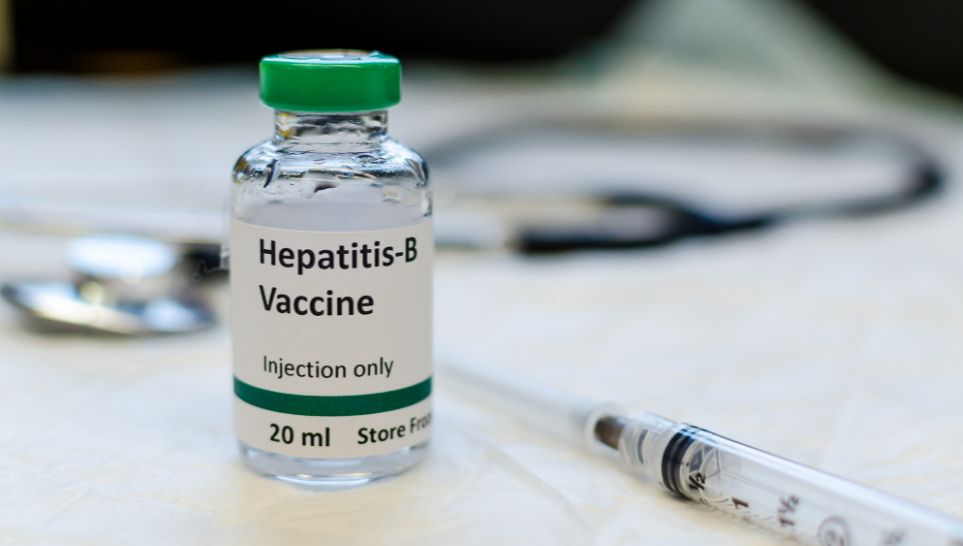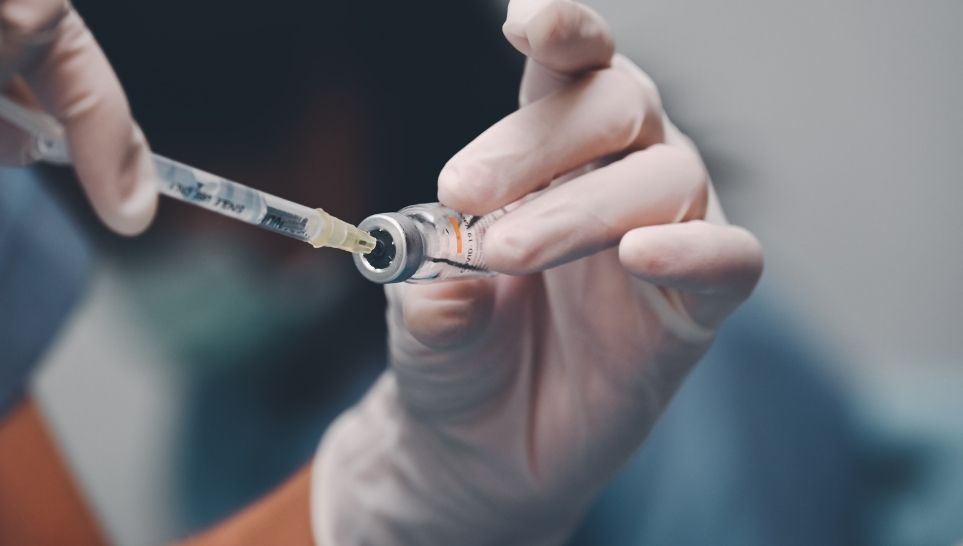
The recent spotlight on vaccine injuries has spiked interest in the prognosis of Guillain-Barre syndrome, and people find the data intriguing but also enigmatic. Guillain-Barre syndrome (GBS) is a heterogeneous disease marked by rapidly progressive, symmetrical limb weakness. It typically features hyporeflexia, where muscles are less responsive to stimuli, or areflexia, where muscles completely stop responding to stimuli.
In some patients, sensory disturbances and cranial nerve deficits occur. They may even find themselves requiring mechanical ventilation or other life-saving interventions during the course of their treatment. As a rare autoimmune disorder with around 20,000 new patients annually in the United States, many questions arise about:
- the long-term prognosis of Guillain-Barre syndrome (GBS)
- links that may explain why the immune system attacks its own nerves
- whether the ill-effects are curable or preventable
Medical professionals report that it is common for an acute bacteria issue or virus infection to trigger the disease, such as a common but severe urinary tract infection. Guillain-Barre syndrome often starts with symptoms like weakness or tingling in the feet and legs and spreads to the upper body. Unfortunately, paralysis and death can occur if the patient does not seek treatment or experiences complications (there are still cases where patients die after treatment fails).
Vaccinations have featured widely in the discussion on Guillain-Barre syndrome, including the humble flu vaccine that has been among the known triggers for GBS. Below, Sadaka Associates Vaccine Injury Help Center explores the details around a GBS prognosis and how its recovery process could affect a person’s quality of life. They also look into ways to avoid these triggers and the legal ramifications involved.
The Typical Onset of Guillain-Barre Syndrome in Adults
Part of what makes the prognosis of Guillain-Barre syndrome difficult to measure is the wide variation in human immune responses to similar inputs. Scientists cannot agree on the cause of GBS or determine why some patients experience such a rapid onset of the symptoms.
The Journal of Neurology, Neurosurgery & Psychiatry reported that about two-thirds of patients report symptoms of infection in the four-week period preceding a diagnosis of Guillain-Barre syndrome. Another potential cause relates to vaccinations, as the body misinterprets the vaccine material and overcorrects its response.
Clients at Sadaka Associates Vaccine Injury Help or those these patients have left behind commonly express dismay at how little clarity there is about this disease. The center’s legal team consults a wide array of knowledgeable sources while preparing the facts of each case while understanding these frustrations first-hand. If in doubt, schedule a consultation and discuss the options with one of the vaccine injury representatives.
What to Expect: Symptoms and Prognosis of Guillain-Barre Syndrome
GBS causes the body’s immune system to erode nerves, damaging the myelin sheath that transmits information between brain and muscle. Myelin regenerates slowly, which means weeks or months to regain complete sensorimotor control.
Other than a fatality, one of the worst outcomes is tetraplegia, the inability to voluntarily move the upper and lower body. Tetraplegia may not improve with physical therapy for all patients; it is still unclear why this is so. Similarly, ventilation patients typically spend 50 days on breathing assistance, whereas other people present such a mild form of the disease that they recover naturally.
In general, the adult prognosis of Guillain-Barre syndrome includes the following:
- Around 80% walk unassisted after six months.
- Around 60% regain full motor sensory strength by one year.
- Approximately 5 to 10% require prolonged recovery with dependence on a ventilator but continue to have difficulty walking long-term.
Muscle weakness is at its worst between Days 10 and 14 of developing GBS, and a best-case scenario involves mild difficulties walking for a few weeks. The condition is prevalent in those 50 and over.
The Biological Effects of GBS
Infection remains a common known trigger, though the obvious biomarkers of Guillain-Barre syndrome in spinal fluid analyses remain limited. Patients may experience paralysis, needing serious physical therapy to regain any sensation or motor function in their limbs or the entire body. Biologically, the prognosis of Guillain-Barre syndrome is inconsistent, but cardiovascular problems are common, altering blood pressure and necessitating cardiac pacemakers.
Other Symptoms
While many patients experience loss of sensation in their legs first, about 10% of patients feel weakness or tingling in the arms or face. Additional symptoms of Guillain-Barre syndrome include:
- Unsteady walking
- The inability to climb stairs
- Stilted facial movements while speaking, chewing or swallowing
- Double-vision or eye paralysis
- Severe aches and pain (cramps may be worse at night)
- Incontinence
- Rapid heart rate
- Low or high blood pressure
- Difficulty breathing
- Relapse, even post-treatment
- Blood clots
These symptoms require immediate medical attention for a chance at a full recovery. If you believe your Guillain-Barre syndrome diagnosis has followed a vaccine or medical malpractice event, feel free to contact Sadaka Associates Vaccine Injury Help Center for guidance on how to proceed.
The Diagnostic Criteria for Guillain-Barre Syndrome

Medical professionals follow a straightforward process when diagnosing this condition, but there are times where patients exhibit abnormal characteristics. A lumbar puncture recommendation arises to prevent false diagnoses and eliminate the possibility of other causes for similar symptoms. The differential diagnosis covers infectious diseases and neuromuscular disorders.
When patients exhibit a higher cell count in cerebrospinal fluid (CSF), doctors weigh HIV, Lyme disease, and similar infectious diseases as viable possibilities. Lab-based investigations can also determine the origin of the GBS symptoms with more accuracy.
Sensorimotor symptoms require differential diagnoses, with paraparesis necessitating a spinal cord MRI and CSF examination. Understandably, medical professionals hesitate to recommend treatment or discuss the prognosis of Guillain-Barre syndrome before completing these tests.
The Path to Recovery After a Guillain-Barre Syndrome Diagnosis
Recovery generally begins two to four weeks after diagnosis and lasts from six months to three years. About 5% of cases relapse, though children tend to recover fully. Around 85% of patients who recover are free of lingering side effects. Immediate treatment is crucial after a diagnosis of Guillain-Barre syndrome for a chance of a meaningful recovery.
Two leading treatment methods dominate:
- Plasma exchange
- Intravenous Immunoglobulin (IVIg) when patients cannot walk ten meters unaided
A cure remains elusive, but treatments like these can reduce symptoms and mobilize patients.
Plasma Exchange
The plasma exchange treatment aims to clean the blood of possible inflammation causes and is effective within four weeks after the initial weakness appears. Exchange typically comes in five or more sessions over a two-week treatment period (or two sessions for patients who can walk independently). Children may not be eligible to receive this treatment, and not every hospital can administer it to their patients.
As the prognosis of Guillain-Barre syndrome gathers more clarity from the data, there is hope for fewer complexities in the recovery process.
Intravenous Immunoglobulin (IVIg)
A high dose IVIg can increase protein levels and cell counts in CSF, and only applies when a patient cannot walk ten meters unassisted. It is more readily available than plasma exchange treatment and only exhibits mild adverse side effects, if any. It remains the leading treatment method for GBS worldwide.
A Note on Relapse and Mortality
GBS has a relapse rate of about 5 to 10%, with the initial pathogen-host interaction having a crucial role in its development. Few studies explore genetic factors, and data remains sparse. Many patients who seek treatment make a full recovery, but the mortality rate of GBS is 4 to 7%.
FAQs: The Prognosis of Guillain-Barre Syndrome and Vaccine Injury

Which treatments are helping people recover from GBS faster?
Many Guillain-Barre syndrome cases show symptom relief or accelerated healing through various treatments. For example, physical therapy helps recover muscle function. Doctors also recommend blood treatments, such as plasma exchange and immunoglobulin therapy.
Still, symptoms can last for weeks and even years after successful treatment in patients of all ages.
Could COVID-19 affect the prognosis of Guillain-Barre syndrome?
This rare disorder causes an immune system to attack its own nerves, causing tingling extremities (in mild and early-stage cases) or even partial or complete paralysis. The sensation loss may begin in the legs, spreading as the nervous system collapses. Unfortunately, this does make the body susceptible to contracting other infections (including COVID-19) as the immune system veers away from its normal protective function.
Who should I call after a Guillain-Barre syndrome diagnosis?
If you suspect that you have GBS due to a covid vaccine injury or any other vaccine, we recommend calling Sadaka Associates Vaccine Injury Help Center before treatment. Filing a case may make expensive treatments bearable, even if you have reliable health insurance.
Call Sadaka Associates Vaccine Injury Help Center and Take On GBS
Guillain-Barre syndrome is debilitating, even in the best-case scenario. Prompt diagnosis and treatment may increase the likelihood of making a full recovery, but every case is unique. If you attribute your GBS diagnosis to a recent flu vaccine, coronavirus vaccine, or any other vaccination, do not hesitate to reach out to Sadaka Associates Vaccine Injury Help Center.
The prognosis of Guillain-Barre syndrome is irrelevant with the right support for your case. Call The Law Offices of Sadaka Associates at 1-800-810-3457 today and let our highly qualified vaccine injury firms in New York and New Jersey answer all your questions.





